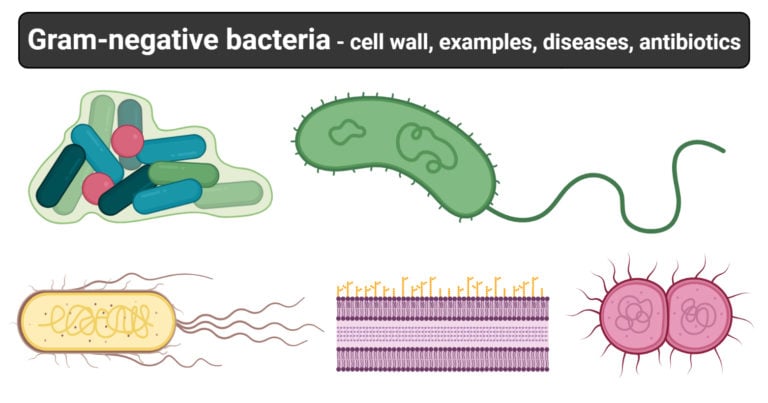

In the lecture on chlamydia, it is stated that chlamydias lack the peptidoclycan, which is not correct according to current knowledge, However, a few years ago, a research group showed that the reticular bodies of chlamydia have a thin peptidoclycan, which is important in cell division, which in chlamydia occurs in host cell inclusions. It was long believed that bacteria within the Chlamydiaceae family have no peptidoglycan, but instead cysteine-rich proteins, which stabilize the outer membrane, through disulfide bonds.
Gram negative bacteria membrane series#
More information about mycoplasmas can be found in a series of lectures. These bacteria usually live in physiological environments where the mechanical protection of the cell against osmotic lysis is not needed. There are bacteria that have a completely different structure of the cell envelope than described in the figures above.īacteria belonging to the phylum Mycoplasmatota, which includes the organisms commonly known as mycoplasmas, are lacking a cell wall because they are unable to produce the peptidoglycan. Porins are membrane-bound proteins that can transport substances through the plasma membrane and the outer membrane if present. The secretion systems also consist of a number of different membrane-bound protein subunits. Many bacteria have so-called secretion systems, which are of great importance for their pathogenic ability. The molecular motor, which consists of various protein subunits and drives the movement of flagella, is anchored in the plasma membrane of the bacterium. those that are part of the elektron transport chain and some of the enzymes that participate in the synthesis of the cell wall. There are various enzyme systems that are bound to the plasma membrane, e.g. The cell envelope is, of course, vital for the bacterium, since its surroundings can be very harsh and thus the envelope provides protection for the bacterium. In the lecture on chlamydia, it is stated the chlamydia lack the peptidoglycan, which is not correct according to current knowledge. In addition to the above components, bacteria may have flagella, fimbriae and capsules on the cell surface (not shown in the figure). The periplasm is gelatinous and contains enzymes which are important for the metabolism of the bacteria. Some authors define the periplasm as the space between the plasma membrane and the outer membrane. The periplasm is the space that exists between the cell wall and the plasma membrane in gram negative bacteria. Some authors include both peptidoglycan and outer membrane of gram negative bacteria in the term cell wall. Both the plasma membrane and the outer membrane are about 8 nm thick and contain proteins that are important for the bacterial functions. Gram-negative bacteria also have an outer membrane containing lipopolysacharide (LPS) to protect against the environment. This network can be considered a giant molecule.

The peptidoglycan chains are cross-linked to each other through peptide bridges and form a continuous network around the bacterium. The cell wall consists of peptidoglycan, which is made up of repeating units of N-acetylglucosamine (NAG) and N-acetylmuramic acid (NAM). In gram positive bacteria, the cell wall is 20-80 nm thick, while in gram negative bacteria it is only 5-10 nm thick. The differences between the gram positive and the gram negative cell envelopes are shown in the very simplified in figure. There are two different main types of structures in the cell envelopes of bacteria and since it can be utilised in gram staining, these bacteria are said to be gram positive or gram negative. For some antibiotics, the fact that there is a large difference between the bacterial cell envelope and the cell envelope of higher organisms (eukaryotic cells) is exploited. Differences in cell envelope structures can be used to differentiate different groups of bacteria e.g. For bacteria, the cell wall together with the cell membrane and also the outer membrane (if present), for the cell envelope. The cell wall and the cell membrane are very important structures of bacteria because they form the bacterial contact surface with the environment. LPS stands for lipopolysaccharide and BLP stands for Brown's lipoprotein, which binds the cell wall to the outer membrane of gram negative bacteria. These components stabilize the cell wall and anchors it in the plasma membrane of gram positive bacteria. TA and LTA stand for teichoic acid and lipoteicoic acid, respectively. NAG-NAM stands for N-acetylglucosamine and N-acetylmuramic acid, which are the building blocks of the cell wall. Schematic illustration of the cell envelope of gram positive and gram negative bacteria.


 0 kommentar(er)
0 kommentar(er)
